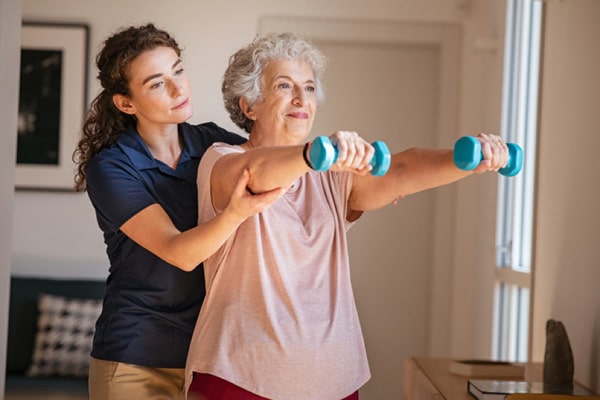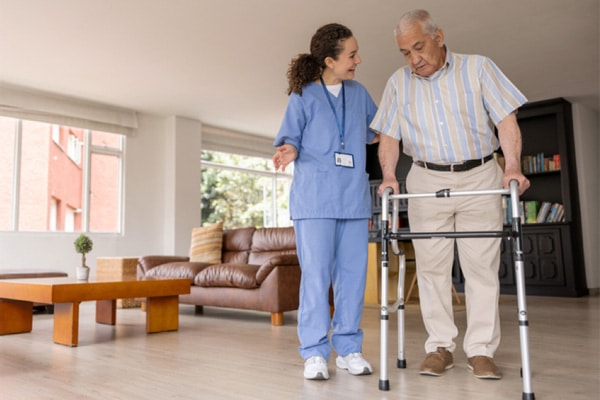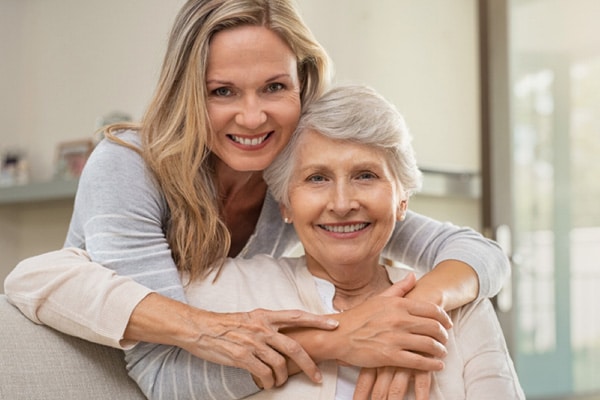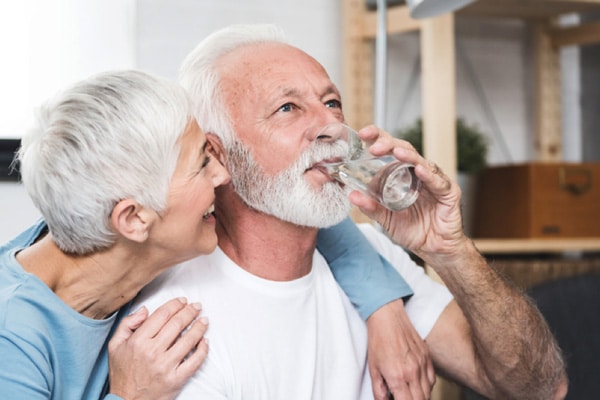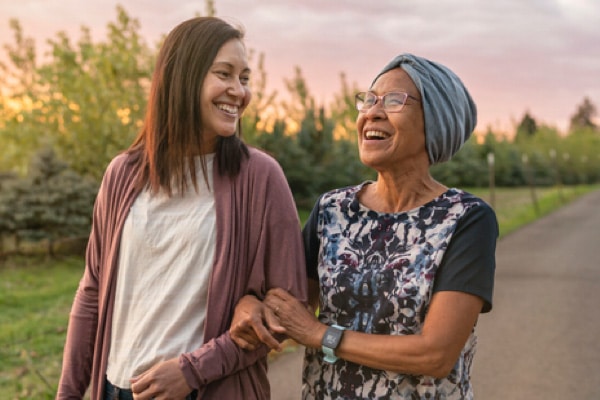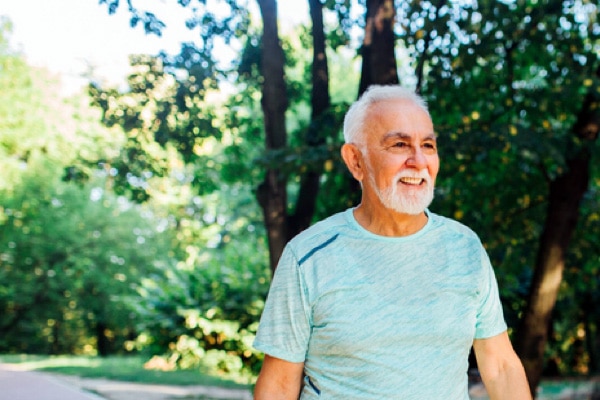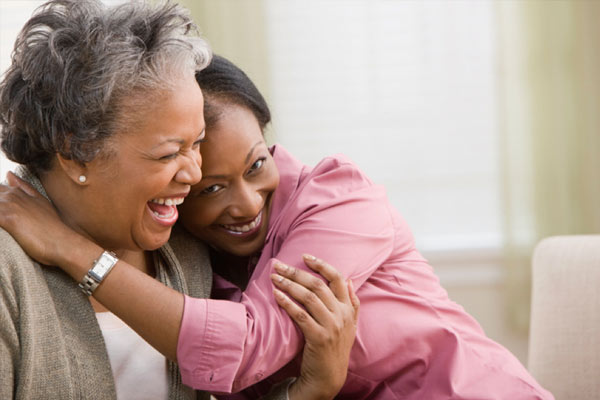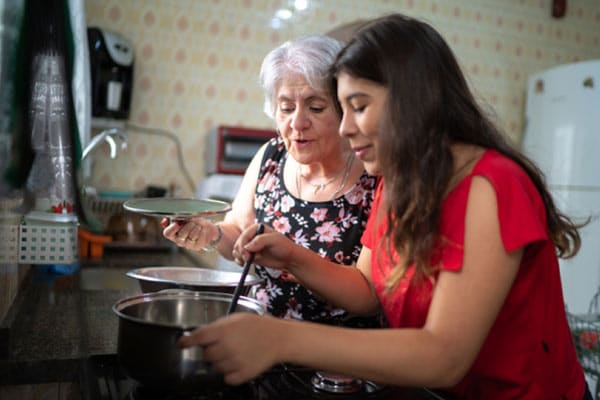On a recent walk with Mom, she misjudged the curb and rolled her ankle. While you are thankful that she only ended up with some bruises and a sprained foot, you’re cognizant of the fact that she could have sustained a much more severe injury.
A fall or other injury can seriously sideline older adults. In fact, according to the CDC, each year more than three million older adults are treated in emergency rooms for fall injuries. And 1 out of 5 falls causes a serious injury, such as broken bones or a head injury.
To help older adults remain active and injury free, the Florida care experts at American, Advocate and Whitsyms In-Home Care share the following head to toe tips.
Feet and Ankles
The foot is made up of 26 bones, joints, tendons, ligaments, and muscles, and over the course of a person’s lifetime, will travel more than 200 million steps. It’s no wonder then that feet and ankles bear the brunt of the aches and pains that surface during aging. To prevent foot and ankle injuries, implement these strategies:
Wear proper footwear. Select and wear shoes that fit well and that match the activity being performed. If you walk regularly for exercise, get fitted for walking shoes that provide proper support, and buy new shoes every 6 to 9 months. When shoes fit properly, there is a decreased chance of developing hammer toes or bunions. Properly fitted shoes also provide support for ankles and knees.
Keep feet clean. Wash feet regularly with mild soap and water, drying well between the toes to reduce the chance of infection. Moisturize the heels only and keep toenails trimmed to prevent ingrown toenails.
Check the feet. Examine your feet daily to check for calluses, blisters or anything that seems unusual. Routine inspection reduces the chance for infection or fungus. If you are unable to easily check your feet, ask a loved one to help you.
Knees
Carrying four times your weight with every step, knees are also prone to a number of ailments as people age, such as:
- Cartilage tears
- Tendonitis
- Sprained or strained ligaments
- Arthritis as a result of aging, injury, or a combination of both
To protect knees from injury, it’s important to incorporate exercises that improve balance, agility, and strength. When exercising or participating in an activity that may put added stress on knees, be sure to incorporate a warm-up and a cool-down to get muscles ready.
Hips
The CDC estimates that 95% of hip fractures are caused by falling. For older adults, a broken hip is not only debilitating, but it can also be fatal. In addition to fractures, older adults can experience hip pain from arthritis or weakened bones from osteoporosis. The hips are a primary source of strength and stability in the legs and help people to perform many everyday activities such as standing, walking, bending and going up and down stairs. When the hip muscles become weak, symptoms can include pain and decreased mobility.
Healthy and strong hips reduce the risk of falling, making it important to engage in regular physician-approved exercise that targets and strengthens the muscles in and around the hips.
Shoulders
Shoulders are the most flexible joint in the human body and are involved in myriad daily tasks – from brushing teeth and preparing food to driving and opening doors. As the body ages, injuries such as rotator cuff tears, frozen shoulder or dislocation can occur during an exercise routine or when simply engaged in regular household chores. To guard against shoulder injuries, be sure to:
- Warm up and condition muscles before exercise or a household chore that may be repetitive and involve shoulder movement.
- Take regular breaks when engaged in an activity that requires a great deal of shoulder use, such as gardening, sweeping, washing windows, etc.
- To reduce the amount of stretching needed to grab items off of a high shelf, consider moving them to a shelf at eye level.
Wrists
The wrists are involved in nearly every daily activity and older adults are susceptible to stress injuries, fractures and arthritis in this joint. Like other joints in the body, it’s important to keep the wrists strong and agile. This reduces pain and helps to maintain full range of motion so that older adults are able to continue to perform a variety of everyday tasks independently.
To help keep wrists and hands strong and flexible, squeeze a tennis ball or stress ball. This exercise is easy to do and can be completed almost anywhere.
In-Home Care Can Help
To help older adults remain independent and injury free, the referred care providers at American, Advocate and Whitsyms In-Home Care are here to help. Our Florida in-home care services can be customized to meet the unique needs of each individual and may include:
- Encouragement to complete physician-approved exercise
- Home safety assessments to reduce the risk of falls
- Help with planning and preparing nutritious meals
- Transportation to physical therapy or doctors’ appointments
- Friendly companionship
- Assistance with personal care and hygiene needs
- Specialized nursing care
- And much more!
Contact us any time to learn more about referred in-home care for older adults by clicking the link to the location nearest you below:
- American In-Home Care – Serving North, Central, and West Coast of Florida
- Advocate In-Home Care – Serving Southeast and Southwest Florida
- Whitsyms In-Home Care – Serving Southeast and Southwest Florida
State of Florida License and Registration Numbers: 30211518, 30211651, 30211295, 30211390, 30210978, 30211293, 30211382, 30211504, 30211733, 30211535, 30211531, 30211710, 30211709, 30211045, 5661

